Faculty News
August 2019
Ramkumar & Lou Remove Toxic Dyes From Wastewater
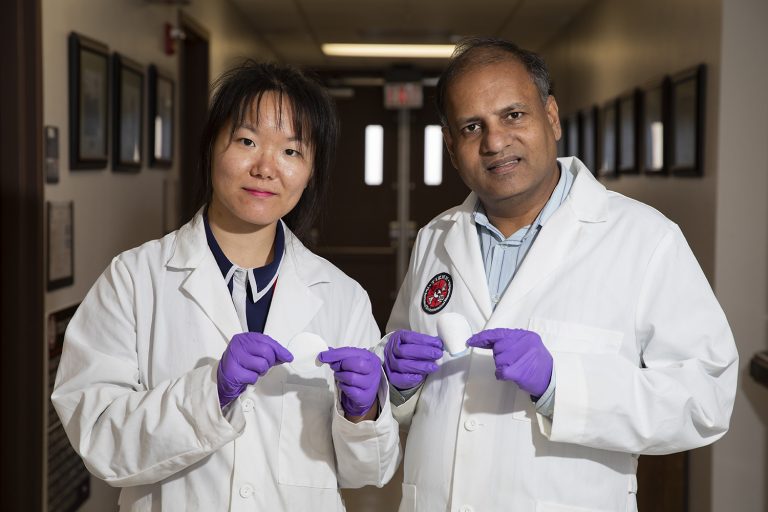
Seshadri Ramkumar (above right), a professor in the Department of Environmental Toxicology, and doctoral candidate Lihua Lou (above left) have found a way to remove toxic dye from textile wastewater. Their method decays the dye by filtering the water through special nanofiber webs and exposing it to visible light—a process called "photodegradation." Previously, the process of decaying the dye has used predominantly ultraviolet (UV) rays. Ramkumar is director of Texas Tech's Nonwovens and Advanced Materials Laboratory, which specializes in technical textiles. He says there are several reasons using visible light is superior to using UV rays. "It is green, renewable and environmentally friendly," Ramkumar said. "Using visible light for photodegradation is not harmful, and it's cost-effective and easy to operate. It makes the color removal in the industry economical." For this study, Lou added nanoparticles into a polymer solution, which was then electrospun into nanofibers. When the composite nanoparticle/nanofiber webs were immersed in water containing a reddish dye called Rhodamine B (RhB), a chemical reaction occurred. The research team, including scientists from the departments of chemical engineering and mechanical engineering, found that 80% of RhB was degraded within six hours, and the remaining 20% degraded slowly, completely disappearing after 49 days. "The research focused on toxic dye removal because it is a persistent challenge for the textile industry," Ramkumar noted.
Chatterjee Offers Novel Theory for Origin of Life
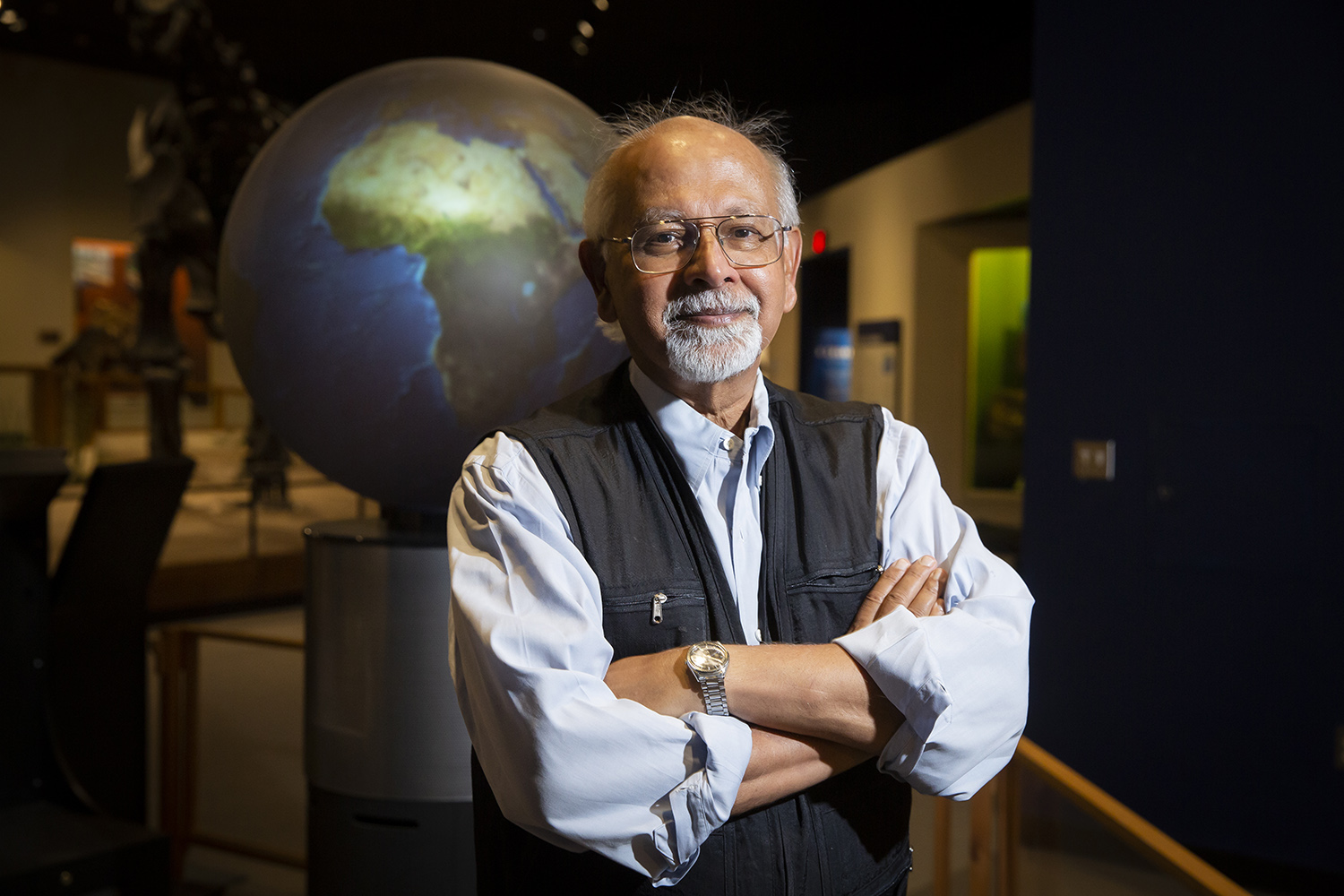
Sankar Chatterjee, a Horn Professor in the Department of Geosciences and Curator of Paleontology at the Museum of Texas Tech University, has created a simulation showing how the genetic code may have evolved—thus building upon his groundbreaking theory on the beginning of life on Earth he originally released six years ago. Based on theories of chemical evolution and evidence from the Earth's early geology, Chatterjee's earlier proposal—where a young Earth, bombarded by icy comets and carbon-rich asteroids, was pockmarked with craters that became the cradles for the first simple organisms—still left one gaping question unanswered: exactly how these primordial organisms developed information systems. As Chatterjee explained, the genetic code was deciphered in the 1960s, and the many scientists responsible for cracking the code were awarded Nobel Prizes. But since that time, there has been no comprehensive theory about why the genetic code evolved in the first place, before the origin of DNA and the first life. Until now. "The question of the origin of the code is the greatest challenge in modern molecular biology and origin-of-life research," Chatterjee said of his latest research, which he is pursuing in collaboration with Surya Yadav, a professor of information systems in the Jerry S. Rawls College of Business. "We have provided a novel model: how the genetic code might have evolved gradually with the improvement of the translation machine during protein synthesis."
Toda Receives Simons Grant
Magdalena Toda, professor and chair of the Department of Mathematics & Statistics, received a $42,000 grant from The Simons Foundation for her research project, "Applications of Willmore Energy Functionals to Protein Biology." Toda is the sole PI on the project, and the grant, which was announced this month, is expected to be paid over a five-year period.
Padgett on NSF Research Team
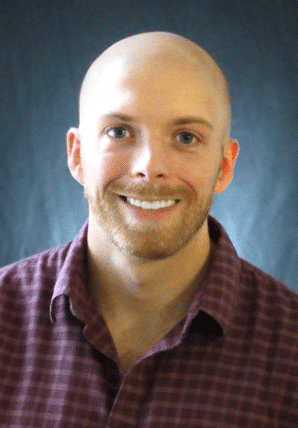 Joshua Padgett, a post-doc in the Department of Mathematics & Statistics, is a co-principal
investigator on an $89,161 National Science Foundation (NSF) grant project, "Onset
Turbulence in Dusty Plasma Liquids." According to the abstract: "The research will
investigate the fundamental physical mechanisms guiding the onset of turbulence in
charged media—a plasma composed of electrons, ions, and dust particles—by numerically
modeling the motion of dust particles in the plasma environment. Understanding the
transition from laminar to turbulent flow in charged media is one of the very important
scientific challenges as it affects complex processes such as nuclear fusion, dispersion
of chemicals in the atmosphere, formation of atmospheric storms, and aircraft stability."
Evdokiya Kostadinova at Baylor University is principal investigator. The grant was
effective Aug. 1, 2019 and is estimated to run through July 31, 2022.
Joshua Padgett, a post-doc in the Department of Mathematics & Statistics, is a co-principal
investigator on an $89,161 National Science Foundation (NSF) grant project, "Onset
Turbulence in Dusty Plasma Liquids." According to the abstract: "The research will
investigate the fundamental physical mechanisms guiding the onset of turbulence in
charged media—a plasma composed of electrons, ions, and dust particles—by numerically
modeling the motion of dust particles in the plasma environment. Understanding the
transition from laminar to turbulent flow in charged media is one of the very important
scientific challenges as it affects complex processes such as nuclear fusion, dispersion
of chemicals in the atmosphere, formation of atmospheric storms, and aircraft stability."
Evdokiya Kostadinova at Baylor University is principal investigator. The grant was
effective Aug. 1, 2019 and is estimated to run through July 31, 2022.
July 2019
Lee & Whitbeck Search for New Particles at CERN
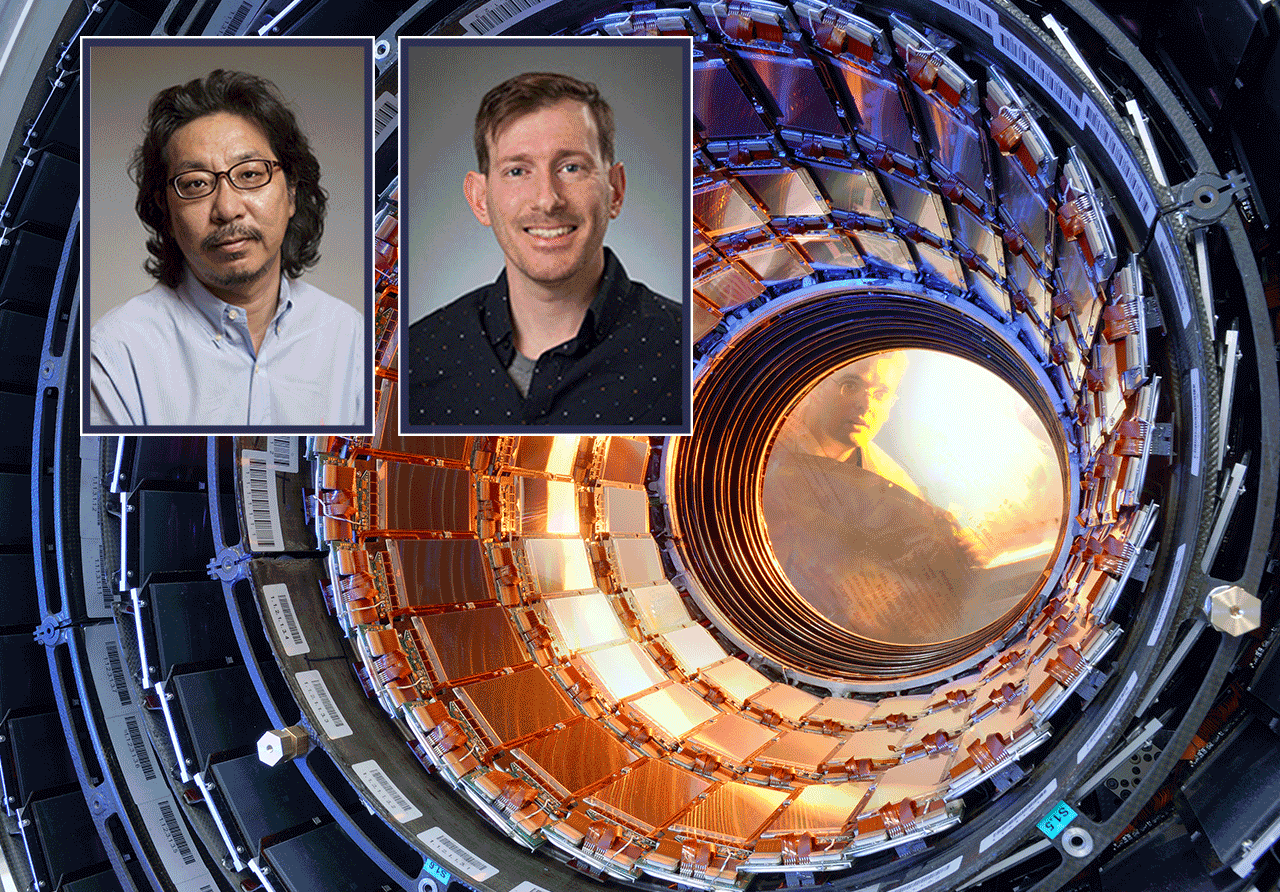
Sung-Won Lee (above left) and Andrew Whitbeck (above right), both of the Department of Physics & Astronomy, presented at the European Physical Society's 2019 Conference on High Energy Physics in Ghent, Belgium, July 10-17. They spoke on the search for dark matter and other new particles that could help unlock the history and nature of the universe. Lee, professor and department chair, is a leader in the search for new particles at the European Organization for Nuclear Research (CERN). Whitbeck, an assistant professor, is working to better understand a category of particles called neutrinos and also is searching for dark matter. "Basically, we're looking for any experimental evidence of new particles that could open the door to whole new realms of physics that researchers believe could be there," Lee said. "Researchers at Texas Tech are continuing to look for elusive new particles in the CMS experiment at CERN's Large Hadron Collider (LHC), and if found, we could answer some of the most profound questions about the structure of matter and the evolution of the early universe."
Tinsley Studies Intermittent Fasting
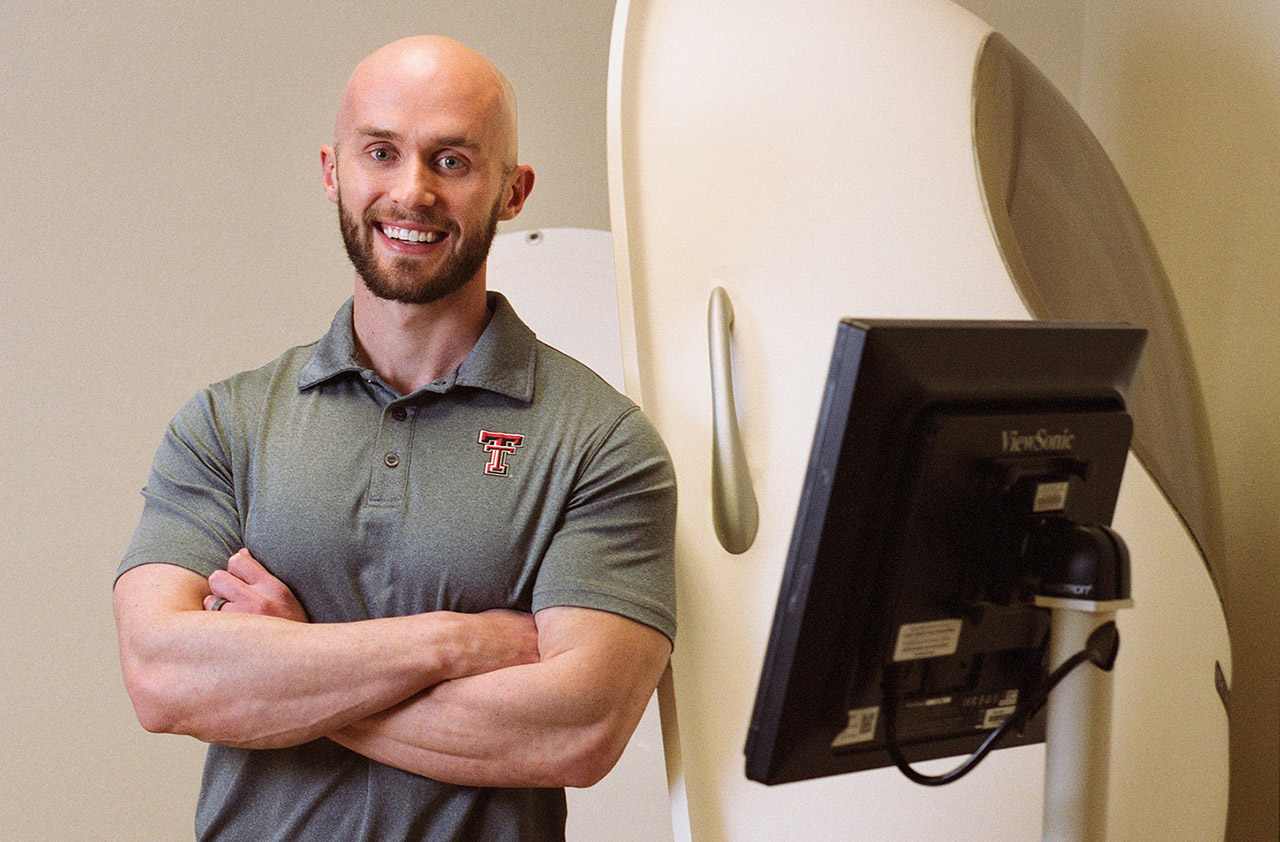
Grant Tinsley, an assistant professor of exercise physiology in the Department of Kinesiology & Sport Management, is conducting ongoing studies on intermittent fasting, a diet phenomenon that is attracting popular attention. Tinsley first became interested in intermittent fasting as a doctoral student at Baylor University in 2013 and conducted his first trial on time-restricted feeding (TRF) there. Because the study was one of the first of its kind, it received substantial attention. The paper publishing its results was awarded the 2018 Best Paper Award by the European Journal of Sport Science. Tinsley then collaborated with a colleague, Antonio Paoli at the University of Padova in Italy, for a second study, which received even more attention than the first—showing there was a need for, and an interest in, continued research on intermittent fasting in active individuals. That led to Tinsley's most recent research, which differed from the prior studies in several ways. For one, it examined TRF in active women instead of active men. Another difference is that this trial added a TRF group that was taking a dietary supplement called beta-hydroxy beta-methylbutyrate (HMB) when they were fasting.
Lehman's Dinosaur Fossil Gets Classified
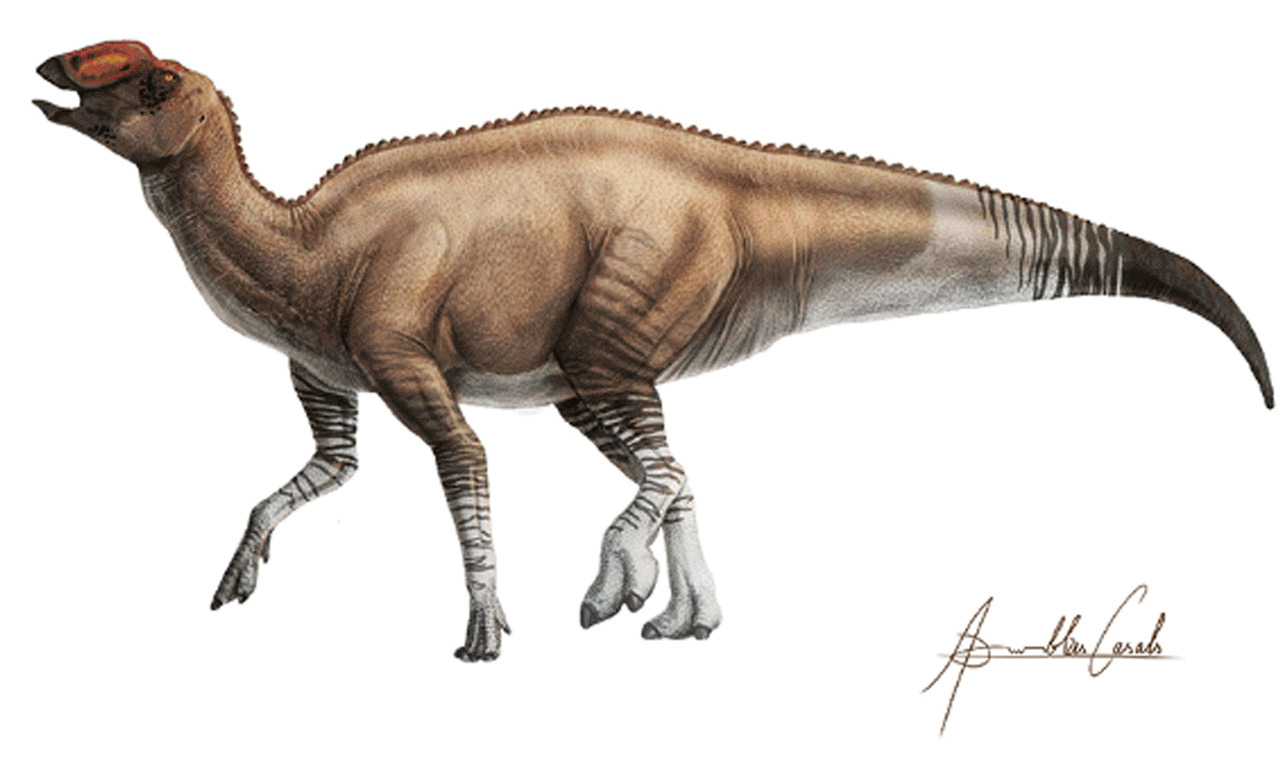
Thomas Lehman, a professor in the Department of Geosciences, was a master's student in 1985 when he discovered some badly weathered bones in the rock layers of southwestern Big Bend National Park. He and his fellow grad students collected the fossils, but they couldn't immediately be studied because they were stuck together. Later research in the 1990s revealed two arched nasal crests, so scientists believed the fossilized animal might have been a member of the Gryposaurus genus, which includes three different species of duck-billed dinosaurs, more formally known as hadrosaurids. But new research has shown Lehman's specimen was more primitive than Gryposaurus. On July 12, 2019, the fossil was announced in the Journal of Systematic Paleontology as representing a new genus and species, Aquilarhinus palimentus. Lehman said, "This new species is particularly interesting because it is among the earlier representatives of the duck-billed dinosaurs, and it shows us what the narial crest, or nose, of these animals looked like before the wide variety of distinctive noses evolved in later species of duck-billed dinosaurs."
Nagihara Builds Moon Probe for NASA
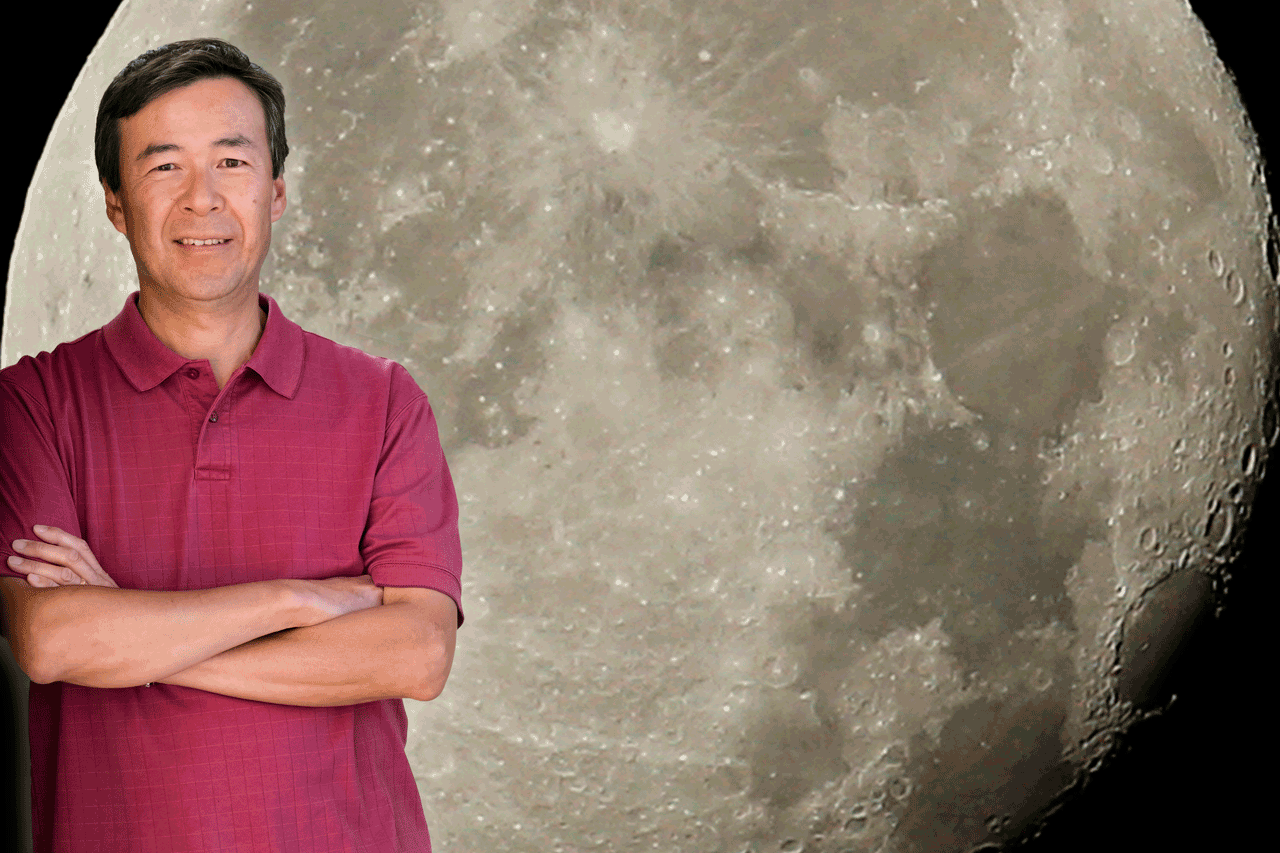
Seiichi Nagihara, an associate professor in the Department of Geosciences, has been working for more than a decade to design an instrument that could sit on the surface of the moon and accurately measure the amount of heat coming out from its interior. Now, thanks to a nod from NASA, Nagihara will actually get to build his instrument and watch it in action, according to a July 2 report in Texas Tech Today. Through a program called Commercial Lunar Payload Services (CLPS), NASA is selecting instruments for future missions. Nagihara's lunar heat flow probe was announced July 1 as one of these instruments. "Each CLPS landing mission is expected to have only 8-10 Earth days of work time on the moon, so each of the payload instruments must complete its work very quickly," explained Nagihara. "For the last couple of years, my team has been developing a lunar heat flow probe that can be deployed quickly in order to meet the CLPS landers' requirements."
Guengerich Receives Travel Grant for Bolivia
Sara V. Guengerich, an associate professor of Spanish in the Department of Classical & Modern Languages & Literatures, received a research travel grant from TTU Office of Research & Innovation to conduct archival research at the Bolivian National Archive in Sucre, Bolivia, in July 2019. She also received the Publication Subvention Award from the Texas Tech Humanities Center. That award is earmarked toward publication expenses for her upcoming book, "The Cacicas of Colonial Latin America, 1492-1825."
Casadonte Named ACS Fellow
Dom Casadonte, the Minnie Stevens Piper Professor in the Department of Chemistry & Biochemistry, was named a Fellow of the American Chemical Society (ACS) in the July 15, 2019, issue of the Society's magazine, He will be honored at the ACS National Meeting this fall in San Diego. Yehia Mechref, Horn Professor and department chair, said the ACS Fellows Program was created by the ACS Board of Directors in December 2008 to recognize members for outstanding achievements in and contributions to science, the profession and the Society.
Cozzolino Receives NSF CAREER Award
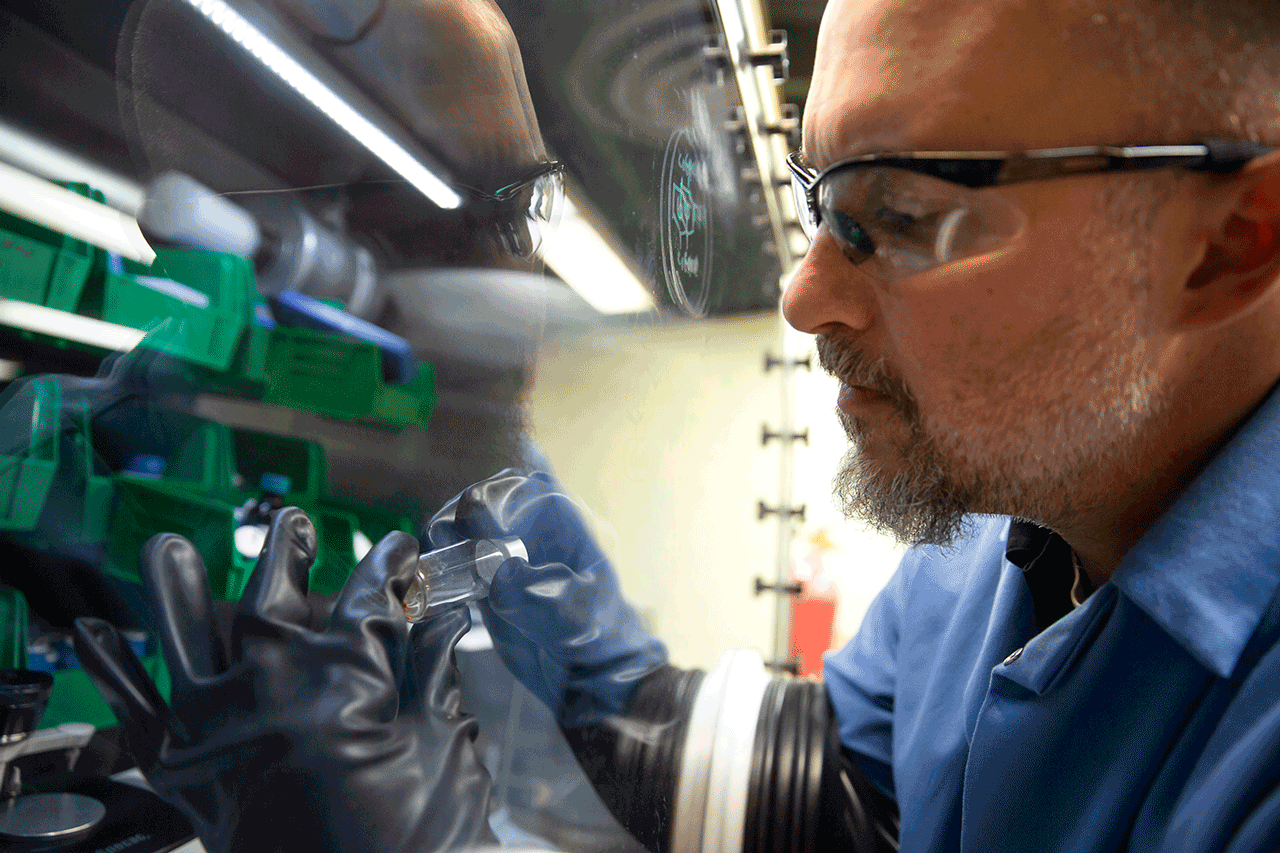
Anthony Cozzolino, an assistant professor in the Department of Chemistry & Biochemistry, recently received a five-year, $655,710 CAREER Award from the National Science Foundation (NSF) to further his research into the design and synthesis of molecules containing the elements antimony and bismuth. Imagine picking up a box of LEGOs, shaking it and watching as the bricks assemble themselves, creating the object they're supposed to comprise—that's a good analogy of Cozzolono's research, but with molecules. "We design these for molecular recognition, the ability of these molecules to specifically recognize other molecules in solution and self-assemble into more complex structures," he said in a Texas Tech Today article dated July 10. "We design different pieces so they will fit together in a specific way to make something more complex, but they do it on their own."
Korzeniewski Receives NSF Grant
Carol Korzeniewski, a professor in the Department of Chemistry & Biochemistry, is Principal Investigator (PI) on a new National Science Foundation (NSF) grant. Shelley Minteer of the University of Utah is a co-PI. The grant project, entitled "Advancing Strategies for In-Situ Determination and Spatial Mapping of Components within Membrane Systems for Energy Conversion," represents a total award of $558,362 for three years, with $302,300 of that amount coming to Texas Tech. Yehia Mechref, Horn Professor and department chair, said the project supports the construction a confocal Raman microscope with oil-immersion optics to enable high spatial resolution imaging and measurements on single, micron-scale particles in Korzeniewski's lab.
June 2019
Carr & Harris Study Frogs to Help Humans
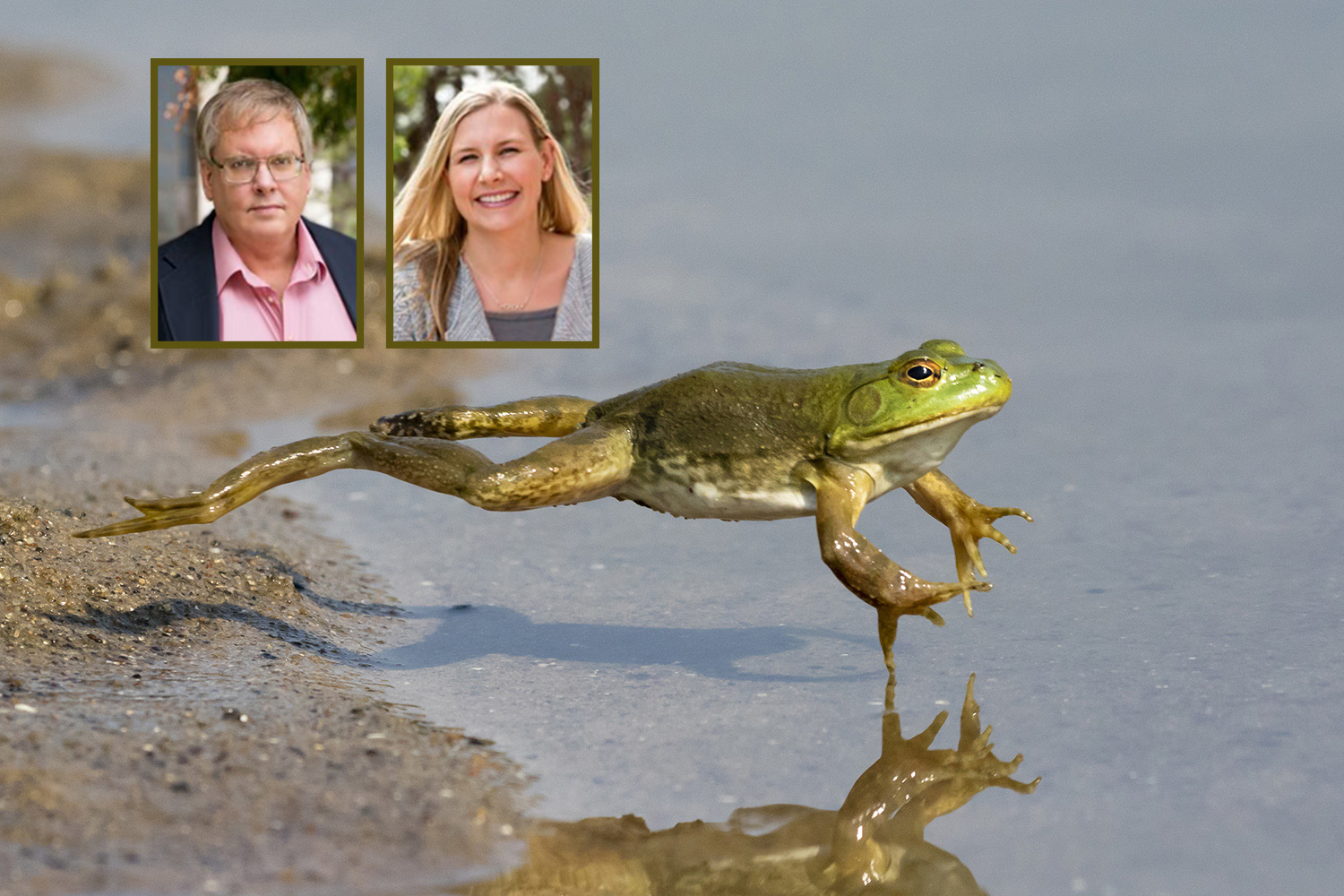
James Carr, a professor of endocrinology, and Breanna Harris, a research assistant professor, both in the Department of Biological Sciences, are studying fear and stress in animals to learn how those factors influence feeding and behavior. In turn, they hope to use this information to develop better diagnostic tools and medications for humans, according to a Texas Tech Today article published June 28. The two researchers say there are few times when animals in the wild are not surrounded by predators. The mechanisms by which prey survive are still present in humans, but can lead to anxiety, fear and stress that result in real health problems. Prey animals can detect predators using the same senses humans use, including vision, smell and sound. But Carr and Harris are particularly interested in frogs. A frog's vision uses feature-detecting cells that are sensitive to key attributes of both their prey and their predators, including size, shape, contrast and movement. "Frogs only have one visual system. Humans have two, and we can't separate those research-wise," Carr said. "It's very difficult, because both of those visual systems interact. We're interested in the subconscious visual system, which you have, but you don't know you're using." Harris made it clear that when a frog sees movement and size that indicates there is a snake, it makes no conscious decisions on how to act on that information. The way the cues are interpreted in the brain trigger a behavior, and humans share some of those innate abilities to identify certain dangers.
Davis Uses fMRI To Study How People Learn Music
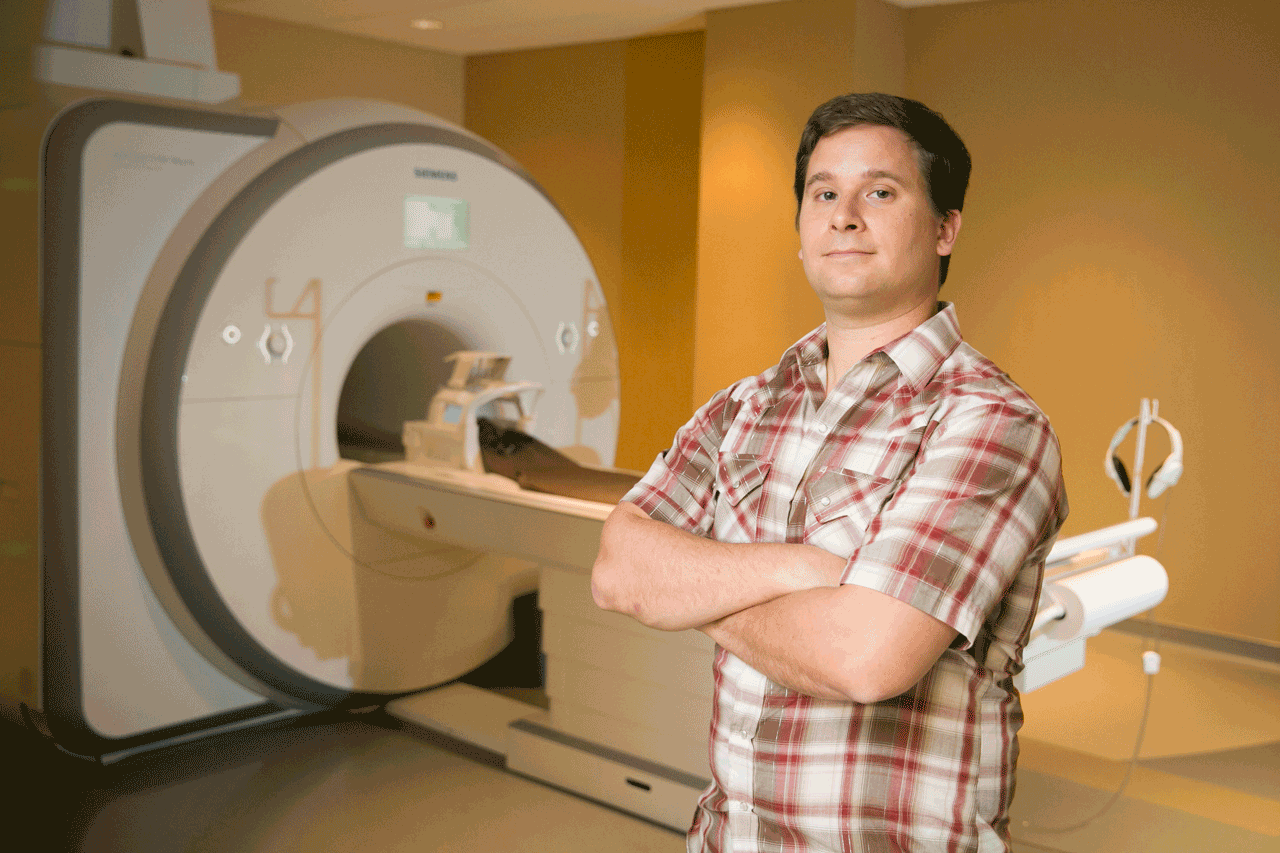
Tyler Davis, a cognitive psychologist in the Department of Psychological Sciences, joined two musicians and an electrical engineer to conduct an interdisciplinary study to understand how people learn music. The team used functional Magnetic Resonance Imaging (fMRI) brain imaging to see what would happen when research subjects were asked to sing a new song or to repeat note sequences on a keyboard. In the singing test, people learned the song much easier when it was in a language they understood. The brain's error detection centers lit up if singers realized they had made a mistake. In the keyboard test, musicians were quicker than non-musicians at learning the note sequences, and their brains showed more activation in the cerebellum. Davis, who also directs Texas Tech University's Caprock fMRI Lab for Cognitive Neuroscience, says the research group hopes to use some of the information they're collecting to design better music therapy, noting that stroke survivors sometimes regain their vocal abilities by learning to sing.
Hayhoe Named to National Museum Board
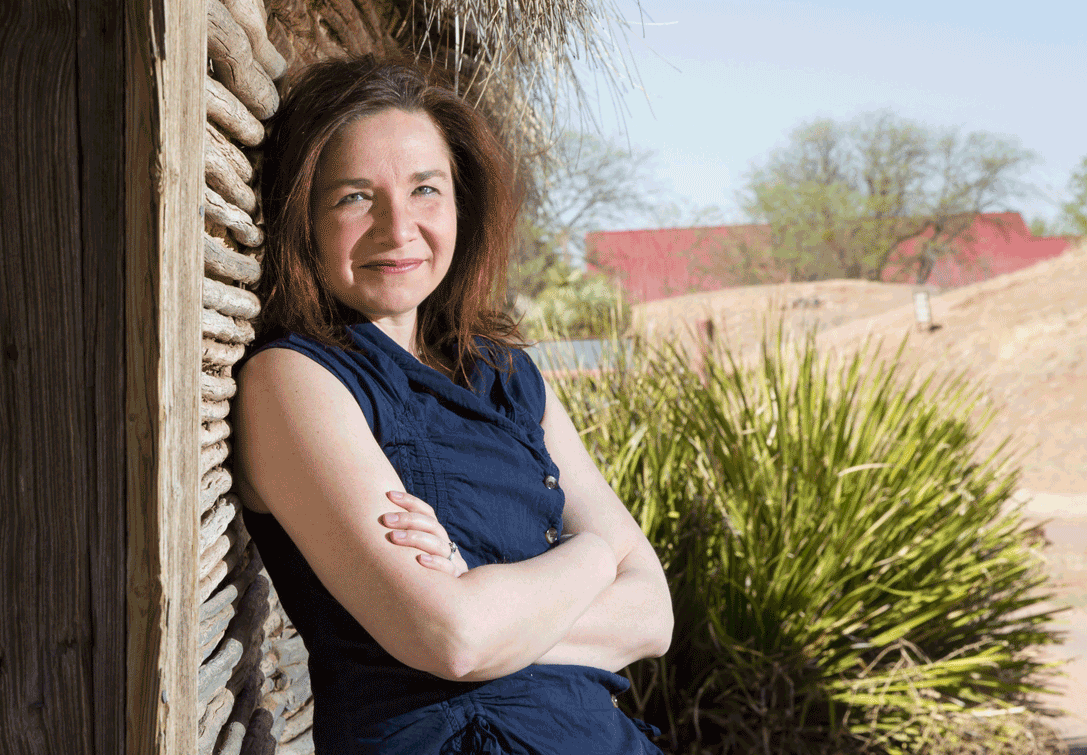
Katharine Hayhoe, a professor in the Department of Political Science and co-director of the Texas Tech University Climate Center, has been named by the Smithsonian Institute's Board of Regents to the advisory board of the National Museum of Natural History in Washington, D.C. the announcement was published June 27 at Texas Tech Today. "Museums convey the wonder and beauty of science in a unique way that appeals to all of us, from young to old," Hayhoe said. "I'm delighted to be serving as an adviser to the Smithsonian Natural History Museum and look forward to contributing to their mission, to promote understanding of the natural world and our place in it." Hayhoe is considered one of the world's leading experts on climate science. Her research focuses on evaluating future impacts of climate change on human society and the natural environment by developing and applying high-resolution climate projections. This year, she has been named one of the World's 100 Most Influential People in Climate Policy by Apolitical and to the annual list of Global Thinkers by Foreign Policy Magazine, one of the world's leading publications focused on global affairs.
Edwards to Attend Leadership Institute
Carole Edwards, an associate professor of French in the Department of Classical & Modern Languages & Literatures, has been chosen to attend the President's Leadership Institute 2019-2020. The purpose of the institute is to empower faculty and staff with a leadership foundation guided by principles of engagement, innovation, inclusiveness and impact. In previous years, those chosen attended classes on network development, personal development, professional development, leadership development and institutional development. Collectively, the strategies, skills, and knowledge presented during the President's Leadership Institute are meant to help attendees become high-performers and in return, lead their teams to a higher level of productivity.
College of Arts & Sciences
-
Address
Texas Tech University, Box 41034, Lubbock, TX 79409-1034 -
Phone
806.742.3831 -
Email
arts-and-sciences@ttu.edu
